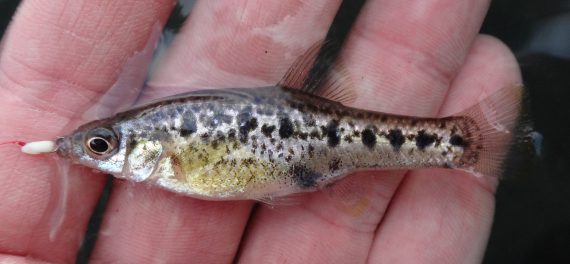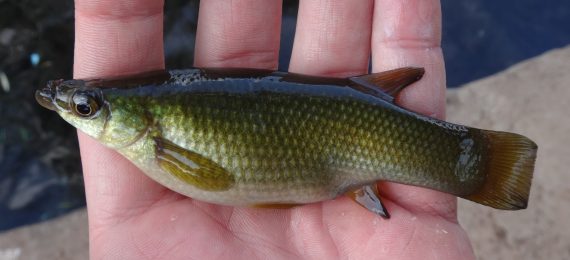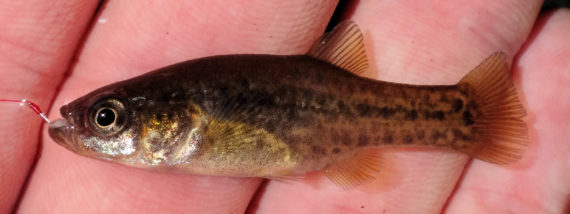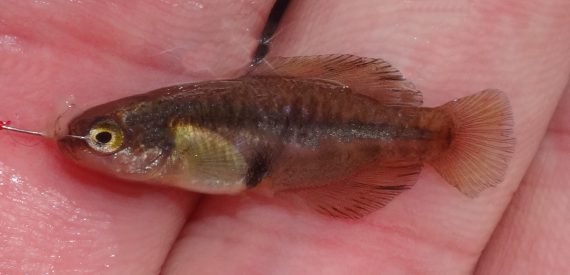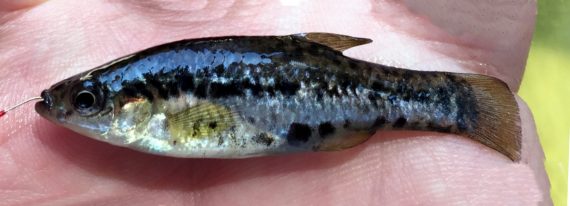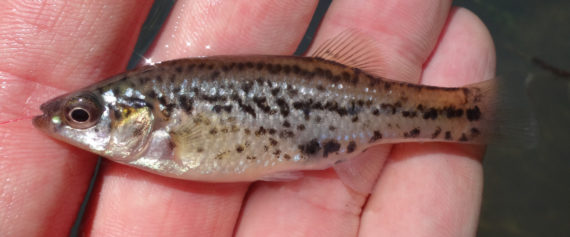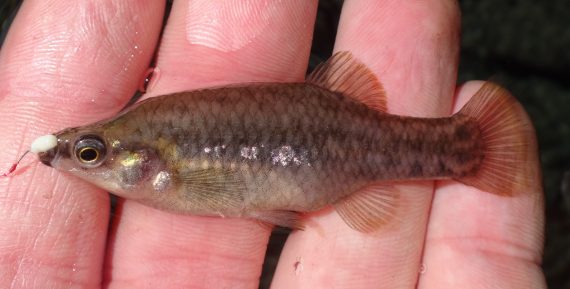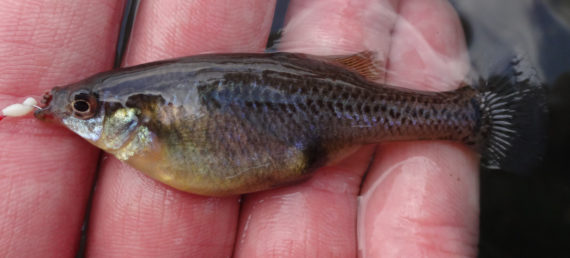Splitfin Family – Goodeidae
There are currently NINE members of the Splitfin or Goodeidae Family, all of which are from Mexico’s freshwater systems, are presented in this website:
FROM FRESHWATER (9):
The fish of the Splitfin or Goodeidae Family are known in Mexico’s fishing areas as mexclapique. The majority of the Splitfins are endemic to shallow fresh-water habitats with year round uniform temperatures of the Central Mesa area west of Mexico City at elevations of 2,800 m (9,200 feet) with a few species found in the brackish fringes of both the Atlantic and the Pacific Ocean. The family has 49 species placed into 18 genera. The common name “splitfin” comes from the male fish which anal fins with anterior rays that are partially separated from the rest of the fin. The majority of Splitfins are about 5.0 cm (2.0 inches) in length but a few reach 20 cm (7.9 inches). Reproduction is viviparous and involves internal fertilization with males having a specialized sex organ, the andropodium (a notched anal fin), short gestation periods and the live birth of twenty to thirty 1.0 cm (0.5 inch) juveniles. They are unique among live bearers in that developing young are nourished by a specialized structure, the trophotaenia. Females do not store sperm and copulation is required prior to each pregnancy.
The Splitfins, in general, have elongated but diverse body shapes with a pointed snout and an elongated caudal peduncle. They are sexually dimorphic with the males being more highly colored than the females. Most have short heads with pointed snouts and a large terminal mouth. They have anal fin (which are smaller) and dorsal fins that are set well back in the body and rounded caudal fins.
Splitfins are found demersal in clear warm springs with slight current flows and consistent year-round temperatures between 20oC (70oF) and 30oC (85oF), with gravel, mud, rocks, and sand substrate, and aquatic proliferate plants at depths up to 2 m (5 feet). The females, which can become massive when pregnant but do not develop a gravid spot, are normally larger than the males reaching a maximum length of 20 cm (7.9 inches). Most are diverse feeders but most are diurnal herbivores that feed on algae, bloodworms, diatoms, insects and invertebrates. Reproduction is viviparous that involves internal fertilization, followed by a short gestation period with each female giving birth to five to thirty live 1.0 cm (0.50 inch) to 1.5 cm (0.75 inch) young that are able to survive on their own.
Splitfin identifications is fairly difficult as they are numerous and most are found in a very limited geographic area. Also several of the family members have not, as yet, been fully characterized.
Goodeidae conservation efforts have been ignored due to their small sizes and the low value of the individual fish. At present the majority of the family are considered to be either Threatened or Extinct in the Wild as they have disappeared from several known sites and are now found only in a few small and isolated new locations. The water habitat in some parts of their range has experienced a staggering amount of degradation during the 20th century and they are heavily prey upon by various birds and various recently introduced non-native fish including Black Bass, Guppies, Largemouth Bass, Sunfish and Tilapia. The Goodeidae historically have been popular aquarium fish, with their membership including the popular Redtail Splitfin, Xenotoca eiseni, but their popularity of late has declined of late due the need for large aquariums, controlled temperatures, and heavy maintenance. The family has been dated to 16,500,000 years in the Miocene Period.
